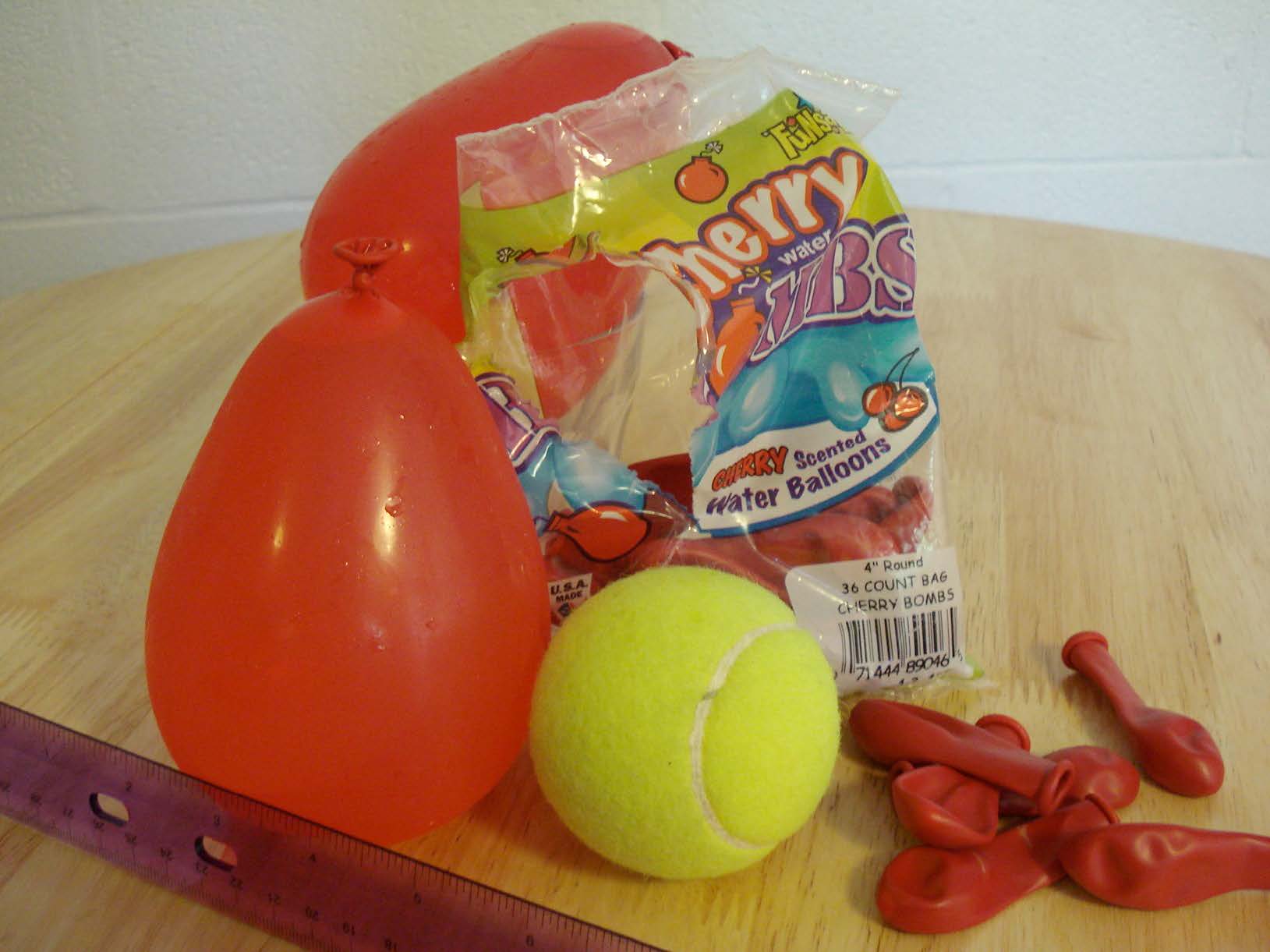
In this experiment, you will test the amount of energy absorbed by different types of materials by dropping balls and water balloons.
Ask Yourself…
Why does it hurt more when you fall down on pavement then when you fall on the grass? The materials that make up grass and pavement are different which makes objects hitting the two surfaces behave differently.
When an object is moving (like you!) it has energy. When it hits the ground some or all of this energy is absorbed by the ground. The grass and the soil underneath it feel softer because they absorb more energy than pavement.
In this experiment, you will test the amount of energy absorbed by different types of materials by dropping balls and water balloons.
Materials
- Ruler or tape measure
- Tennis ball
- Water balloons
- Different surfaces (pavement, grass, gravel, bark, etc.)
Safety
Make sure no one is going to get hit before you throw a ball or water balloon.
Activity
First you are going to use a tennis ball to test how much energy is absorbed by pavement and grass. Find some pavement, maybe in your driveway or on a sidewalk. Hold the tennis ball one foot above the pavement, and hold the ruler up as shown in the picture. Release the ball and watch to see how high it bounces after it hits the ground. Make sure the zero end of the ruler is on the ground, and measure in inches how high the ball bounces. Try it again and count how many times the ball bounces before it comes to rest. Make sure you are not throwing the ball down; just release it and let it fall. Record your data.
Next, move to an area with grass, dirt, or bark. Repeat the above experiment, recording how high the first bounce is and the number of bounces. Compare your data. What surface did the ball bounce the highest off of? What surface did the ball bounce off the most times before coming to rest?
Try some other surfaces and compare to your original data. You may want to experiment with gravel, carpet, tile, or any other surface in a safe area. What happens if you drop the ball from different heights? Try holding the ball straight out to your side and dropping the ball. How many times does it bounce off of each surface now?
Next, you are going to use water balloons to further investigate the properties of these surfaces. Fill a couple of water balloons with water and head outside. Begin by holding a water balloon straight out to the side and drop it onto pavement. Again, don’t throw the water balloon; just release it and let it fall. Did it break? Try the same thing on the grass or other surfaces around you. What surfaces made the water balloon break?
If the water balloons did not break, try holding it higher or dropping it from a higher spot. Slowly move it higher and higher until it breaks. You may have to drop it over a balcony or down some steps. How high do you have to go for the water balloon to break on the pavement? How high do you have to go for it to break on the grass and other surfaces?
Extension Activity
Experiment with different variables. Does it matter how long the grass is? How full the water balloon is? Try making a really big water balloon and a small one and compare.
Summary
How an object behaves when it hits the ground is determined by many things, one of which is the material that it lands on. The material a surface is made of determines how much energy it absorbs when an object hits it, which causes objects to behave differently.
The grass or dirt absorbs more energy when objects hit it. The ball does not bounce as high because it loses more energy when it hits the grass. The water balloon does not break as easily because the energy is absorbed by the grass instead of going into breaking the balloon.
The pavement does not absorb as much energy. The ball bounces higher and for longer because it keeps more energy after hitting the pavement. The water balloon will break when dropped from lower heights because the pavement does not absorb as much energy.
Activity PDF: water_balloons.pdf

